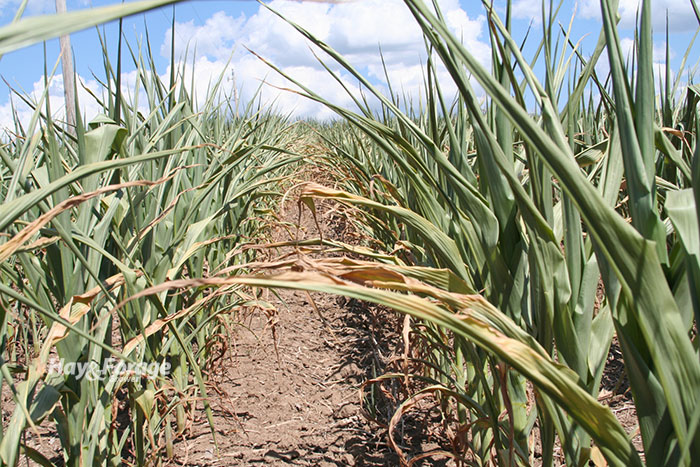
Simple fact: Many farmers pull the trigger too early on drought-challenged corn for silage and either chop the immature plants or disk them under. On a similar note, drought-stressed corn intended for grain is often let to mature when it should have been chopped or sold for silage.
I saw both of these scenarios play out many times during my extension agent days. To be sure, these are not easy decisions.
Fortunately, the University of Wisconsin’s Joe Lauer has evaluated drought-stressed corn silage for many years. The corn specialist notes that if drought occurs prior to pollination and is followed by rain during pollination and grain filling, the resulting silage will have higher neutral detergent fiber (NDF) and starch content; however, there is little change in forage yield, milk per ton, or milk per acre.
If dry conditions persist through pollination and grain fill, the corn silage will be lower in starch content with about 20% to 50% less yield and milk per acre, but milk per ton will drop by less than 10%.
In both scenarios, plant height is reduced. Lauer summarizes by saying, “The success of pollination influences grain and silage yield and the proportion of grain in silage, but it has little impact on silage quality.”
The bottom line is that drought-stressed corn can still make good-quality feed, just less of it. The difference is that nutrients remain in the stalk rather than being translocated to developing kernels.
University of Missouri agronomist Kelly Nelson recommends making a thorough evaluation of plant ears once pollination is complete. He says to evaluate the number of kernels per ear to get an estimate of potential grain yield. This helps make an informed decision on how the crop can be best used, either as silage or grain.
Nitrate nightmares
Droughted corn can often have high nitrate levels. Zachary Erwin, an extension livestock specialist with the University of Missouri, notes that nitrates are typically more concentrated in the bottom 8 to 12 inches of the cornstalk, so cutting higher will help lower nitrate levels in the forage.
Nitrate levels drop during ensiling. This is also what produces silo gas. Erwin suggests at least a 30-day ensiling period before feeding. Testing the forage for nitrate levels both before and after ensiling is also recommended for a crop that has developed during extended drought conditions.
“The range of nitrate reduction is variable — 25% to 50% — and proper harvest timing is key to getting the maximum reduction,” Erwin asserts. “Silage that is too dry may not have as significant of a drop in total nitrate levels. The good news is that if the nitrate levels do drop, even silage without much corn (grain) makes great stock cow feed.”
Erwin notes that the feeding level of droughted corn silage depends on the nitrate concentration and the class of animals being fed. Bred cows are the most susceptible to nitrates, and abortions can occur if the nitrate intake is too high. For stocker cattle, death will generally be the first sign.
Drought-stressed corn silage can still produce high-quality feed, although tonnage will vary depending on the timing and duration of the dry weather. Don’t write off the crop too early and be aware of the potential for high nitrates. Drought-stressed corn still needs to be harvested at the correct moisture level, preferably between 65% and 68%; often, it will look drier than it really is. Test the forage for both nitrates and other important nutrient constituents so that appropriate ration adjustments can be made.

